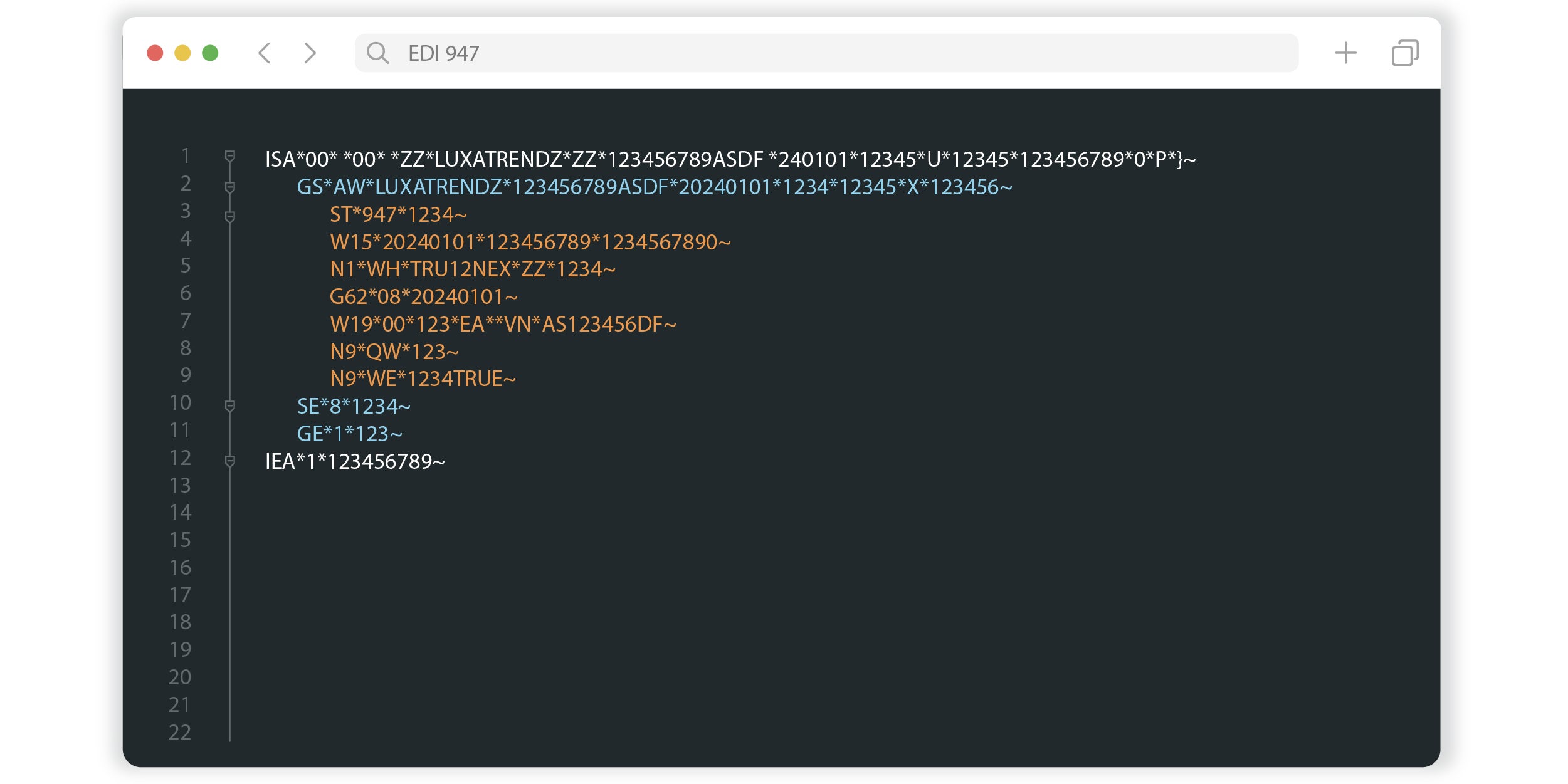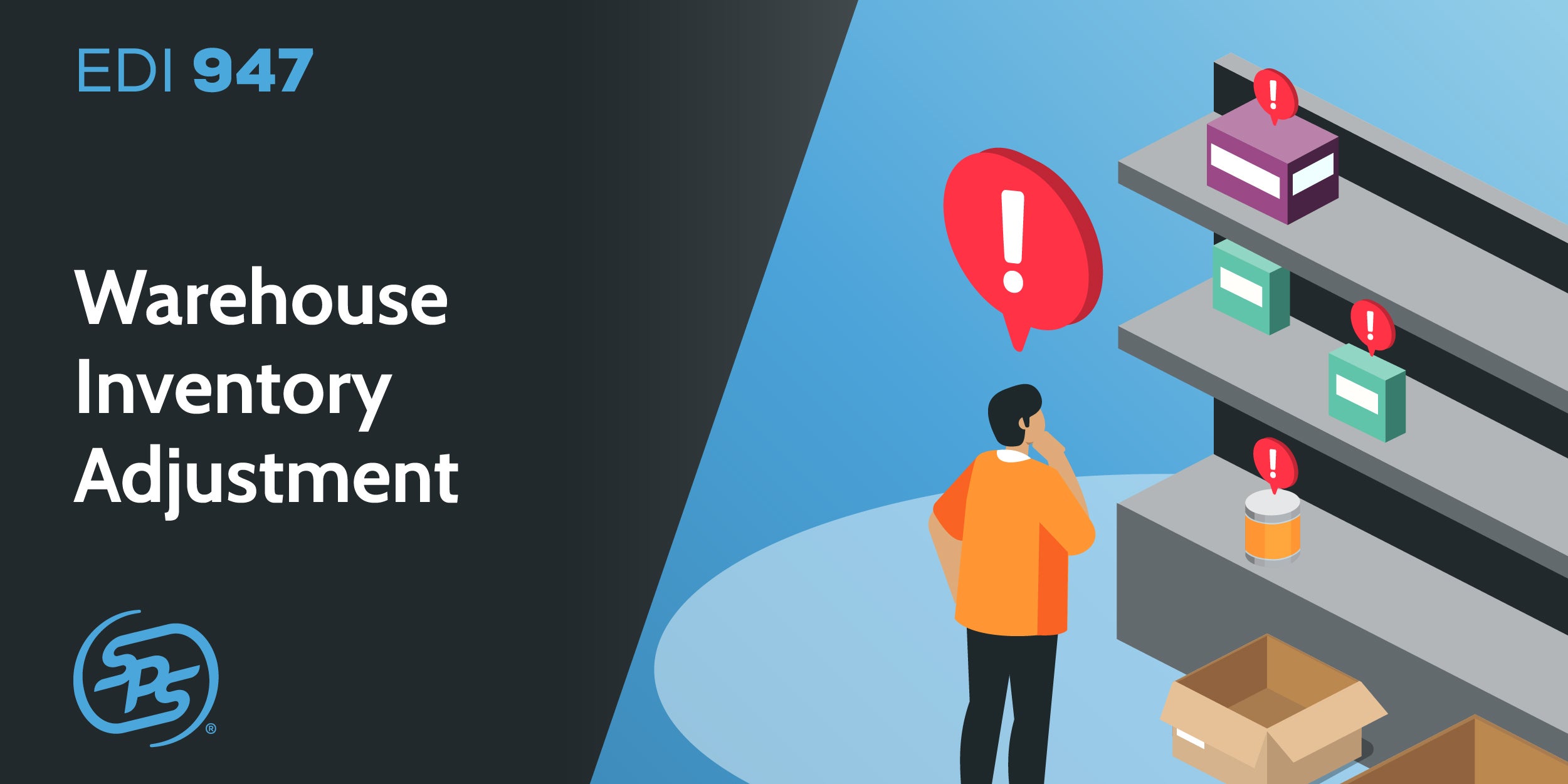The EDI 947 format
The EDI 947 is a way for warehouses to communicate with businesses about the state of their inventory in a quick, detailed and standardized format. It helps everyone stay on the same page and manage their stock more efficiently.

Here’s a general overview of the format and key segments commonly found in an EDI 947:
ISA and GS: Interchange control and functional group headers
ST: Transaction set header
W06: Warehouse adjustment identification
N1: Name
W04: Item detail
W14: Total shipment information
SE: Transaction set trailer
GE and IEA: Functional group and interchange control trailers
How is the EDI 947 used?
The Warehouse Inventory Adjustment Advice is used in several ways to manage and communicate inventory adjustments between warehouses and their trading partners, such as manufacturers, retailers or distributors.
Here’s how the EDI 947 transaction set is typically used in the supply chain:
1. Communicating inventory adjustments
The primary use of the EDI 947 is to inform a trading partner about changes in inventory levels within a warehouse. These adjustments could be due to various factors, including discrepancies found during inventory counts, damaged goods, theft or returns. By sending an EDI 947, the warehouse can provide detailed information about the type and quantity of items adjusted, the reason for the adjustment and the specific location of where these changes occurred.
2. Updating inventory records
Upon receiving an EDI 947, the trading partner updates their inventory management system to reflect the new inventory levels. This ensures that both the warehouse and the trading partner have accurate and up-to-date information about stock quantities, which is crucial for order fulfillment, planning and forecasting.
3. Discrepancy resolution
The EDI 947 helps identify discrepancies between physical and recorded inventory counts. By promptly communicating these discrepancies, trading partners can investigate the causes of the variances, such as errors in receiving, shipping or data entry, and take corrective action to prevent similar issues.
4. Financial and operational planning
Inventory adjustments reported through EDI 947 transactions can impact financial and operational planning. For example, adjustments due to damaged goods might lead to insurance claims or decisions to adjust production levels. Accurate inventory data is essential for effective supply chain management, demand planning and financial forecasting.
5. Compliance and reporting
In some cases, trading partners may have contractual obligations to maintain certain inventory levels. The EDI 947 allows warehouses to provide evidence of compliance with these requirements. Additionally, it supports reporting and auditing processes by providing a trail of inventory adjustments.
Benefits of using the EDI 947 Warehouse Inventory Advice
The benefits of EDI 947 extend to logistics service providers, 3PLs, retailers and suppliers alike. All supply chain partners will gain benefits from using the Warehouse Inventory Adjustment Advice as it provides the necessary quantity and status and reference details needed for confirming the movement of products between all parties.
Automate EDI 947 with Full-Service EDI from SPS Commerce

SPS delivers an unmatched full-service approach that eliminates the cost and risk of manual entry and delivering global support. Our teams proactively monitor your EDI flow, including every step from setup to testing with your trading partners, ensuring compliance. When you need to modify any of your EDI requirements, SPS will is there to help your trading partners comply with any changes.
Full-service EDI providers like SPS Commerce deliver EDI technology and associated staffing resources responsible for customizing, optimizing and operating your EDI solution. A full-service provider, like SPS Commerce, has an expert team that handles ongoing management of your EDI solution.
The SPS team actively manages 9,000 changes from retailers each year. SPS communicates directly with your trading partners to manage connectivity, setup, requirements, updates and support efforts. SPS also takes ownership of understanding your trading partner requirements and making map changes. SPS Fulfillment proactively monitors and optimizes your solution to prevent errors and minimize data entry.
Interested in learning more about our EDI solution?
Additional EDI Resources
Enter a virtual library of information about EDI for suppliers, vendors and distributors to provide you with the product knowledge you need to power your business.




